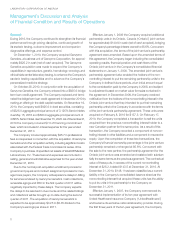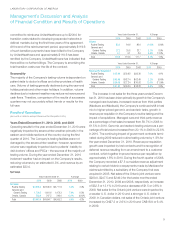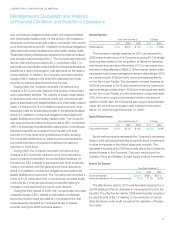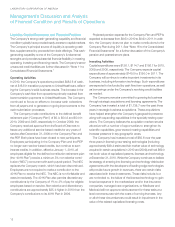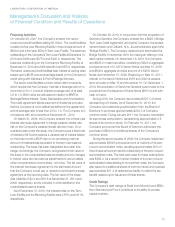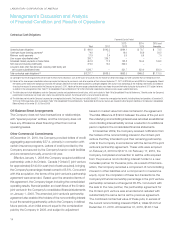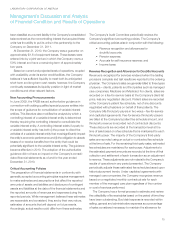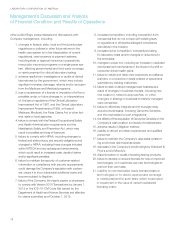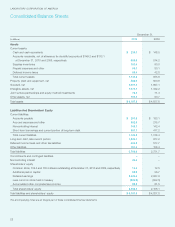LabCorp 2010 Annual Report Download - page 20
Download and view the complete annual report
Please find page 20 of the 2010 LabCorp annual report below. You can navigate through the pages in the report by either clicking on the pages listed below, or by using the keyword search tool below to find specific information within the annual report.18
LABORATORY CORPORATION OF AMERICA
Management’s Discussion and Analysis
of Financial Condition and Results of Operations
other public filings, press releases and discussions with
Company management, including:
1. changes in federal, state, local and third party payer
regulations or policies or other future reforms in the
health care system (or in the interpretation of current
regulations), new insurance or payment systems,
including state or regional insurance cooperatives,
new public insurance programs or a single-payer sys-
tem, affecting governmental and third-party coverage
or reimbursement for clinical laboratory testing;
2. adverse results from investigations or audits of clinical
laboratories by the government, which may include
significant monetary damages, refunds and/or exclusion
from the Medicare and Medicaid programs;
3. loss or suspension of a license or imposition of a fine or
penalties under, or future changes in, or interpretations
of, the law or regulations of the Clinical Laboratory
Improvement Act of 1967, and the Clinical Laboratory
Improvement Amendments of 1988, or those of
Medicare, Medicaid, the False Claims Act or other fed-
eral, state or local agencies;
4. failure to comply with the Federal Occupational Safety
and Health Administration requirements and the
Needlestick Safety and Prevention Act, which may
result in penalties and loss of licensure;
5. failure to comply with HIPAA, including changes to
federal and state privacy and security obligations and
changes to HIPAA, including those changes included
within HITECH and any subsequent amendments,
which could result in increased costs, denial of claims
and/or significant penalties;
6. failure to maintain the security of customer-related
information or compliance with security requirements
could damage the Company’s reputation with custom-
ers, cause it to incur substantial additional costs and
become subject to litigation;
7. failure of the Company, third party payers or physicians
to comply with Version 5010 Transactions by January 1,
2012 or the ICD-10-CM Code Set issued by the
Department of Health and Human Services and effective
for claims submitted as of October 1, 2013;
8. increased competition, including competition from
companies that do not comply with existing laws
or regulations or otherwise disregard compliance
standards in the industry;
9. increased price competition, competitive bidding
for laboratory tests and/or changes or reductions to
fee schedules;
10. changes in payer mix, including an increase in capitated
reimbursement mechanisms or the impact of a shift to
consumer-driven health plans;
11. failure to obtain and retain new customers and alliance
partners, or a reduction in tests ordered or specimens
submitted by existing customers;
12. failure to retain or attract managed care business as a
result of changes in business models, including new
risk based or network approaches, or other
changes in strategy or business models by managed
care companies;
13. failure to effectively integrate and/or manage newly
acquired businesses, including Genzyme Genetics,
and the cost related to such integrations;
14. the effects of the acquisition of Genzyme Genetics on the
Company’s cash position and levels of indebtedness;
15. adverse results in litigation matters;
16. inability to attract and retain experienced and qualified
personnel;
17. failure to maintain the Company’s days sales outstand-
ing and/or bad debt expense levels;
18. decrease in the Company’s credit ratings by Standard &
Poor’s and/or Moody’s;
19. discontinuation or recalls of existing testing products;
20. failure to develop or acquire licenses for new or improved
technologies, or if customers use new technologies to
perform their own tests;
21. inability to commercialize newly licensed tests or
technologies or to obtain appropriate coverage
or reimbursement for such tests, which could result
in impairment in the value of certain capitalized
licensing costs;


